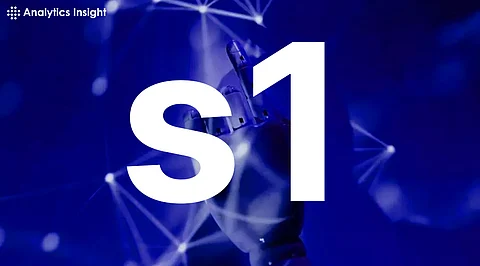

Recently, significant advancements have been made as more big tech companies begin to take the lead in developing advanced artificial intelligence models. For instance, OpenAI has been at the forefront of this movement, with its top-tier models supporting a wide range of applications.
But AI Model S1 presents an open-source rival that poses an alternative to proprietary AI systems. The rise of AI Model S1 marks a shift in the AI landscape, raising questions about competition, accessibility, and the future of AI development.
It's an open-source artificial intelligence model, referred to as the AI Model S1, open source to develop and be another alternative source that will eventually allow access, change, and development, offering something completely different from those closed-source AI models. Open-source AI promotes transparency and encourages collaboration, leading to continuous improvements and innovation.
AI Model S1 aims to offer high-performance capabilities similar to those of OpenAI’s models. It is designed to handle tasks such as natural language processing, text generation, and machine learning applications. By making the model open-source, the engineers behind artificial intelligence Model S1 look to eliminate hindrances that frequently limit admittance to strong man-made intelligence instruments.
Examination of OpenAI's Models
Today, OpenAI has become an organization known for probably the most developed artificial intelligence frameworks on the planet. Models like GPT-4 have managed to show the world's great capability in understanding and generating text that is like human writing. However, all OpenAI models are proprietary. Therefore, only limited access can be granted, and users need strict guidelines on their usage.
AI Model S1 is open-source. This allows developers to modify and fine-tune the model according to their needs. The transparency of AI Model S1 provides researchers with a better understanding of how the model works, which can lead to further advancements in AI technology.
Performance is another critical factor when comparing AI Model S1 with OpenAI’s models. While OpenAI has had more time to refine its models, AI Model S1 is rapidly improving due to the collective efforts of the open-source community. Some benchmarks suggest that AI Model S1 is closing the gap in efficiency and accuracy.
Advantages of an Open-Source AI Model
Open-source artificial intelligence Model S1 gives a few points of interest. One of the primary benefits is openness. Unlike exclusive models that need membership or utilization fees, artificial intelligence Model S1 is available for anyone who intends to use it. This might be especially important for private firms, researchers, and open-source developers who cannot afford to access highly quality artificial intelligence models.
The third benefit is personalization. People can modify and extend the system with open-source models to suit their requirements. This flexibility level is impossible with closed-source AI, where users must rely on the company’s updates and improvements.
Security and ethical considerations also play a role in the appeal of open-source AI. With AI Model S1, developers can review the model’s code to ensure it aligns with ethical standards. This transparency helps build trust among users and reduces concerns about hidden biases or unethical data practices.
Artificial intelligence Model S1 faces a few difficulties despite its benefits. One of the principal concerns is subsidizing. Open-source projects depend on local area commitments and sponsorships, while enormous enterprises with significant monetary assets support exclusive models. Supporting long-haul advancement and upgrades can be troublesome without consistent subsidizing.
Another test is execution consistency. While artificial intelligence Model S1 is improving quickly, restrictive computer-based intelligence models have gone through broad testing and streamlining. Work is underway to guarantee that computer-based intelligence Model S1 keeps up with high exactness and dependability across various applications.
Regulation and governance also pose potential challenges. Anyone can modify open-source AI, which raises concerns about misuse. Proper guidelines and ethical frameworks must be established to ensure the responsible use of AI Model S1.
The Future of Open-Source AI
The presentation of simulated intelligence Model S1 features the developing interest in open-source, man-made intelligence arrangements. As innovation keeps propelling, more designers and associations might pick open-source models over restrictive choices. Cooperation among scientists, designers, and organizations will play an essential role in forming the eventual fate of simulated intelligence.
While OpenAI remains a predominant player, man-made intelligence Model S1 shows that open-source man-made intelligence can provide a suitable other option. The development of artificial intelligence Model S1 will decide what it rivals laid out models and what the means is for the more extensive man-made intelligence scene.
AI Model S1 represents a significant leap toward making artificial intelligence more accessible and transparent. Its open-source approach permits advancement, customization, and moral oversight.
Challenges remain; however, the capability of computer-based intelligence Model S1 to reshape the computer-based intelligence industry, offering an option in contrast to exclusive models, is significant. As the improvement proceeds, the effect of open-source simulated intelligence on the eventual fate of innovation will become progressively significant.
